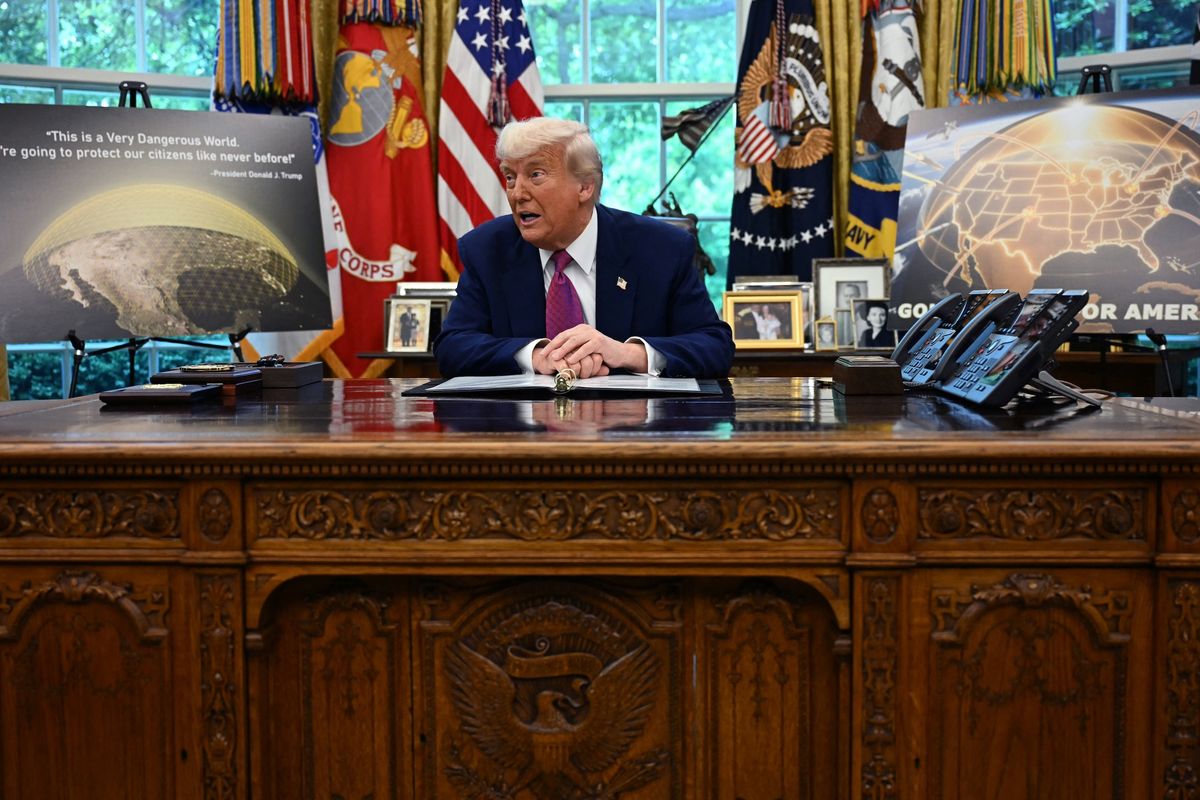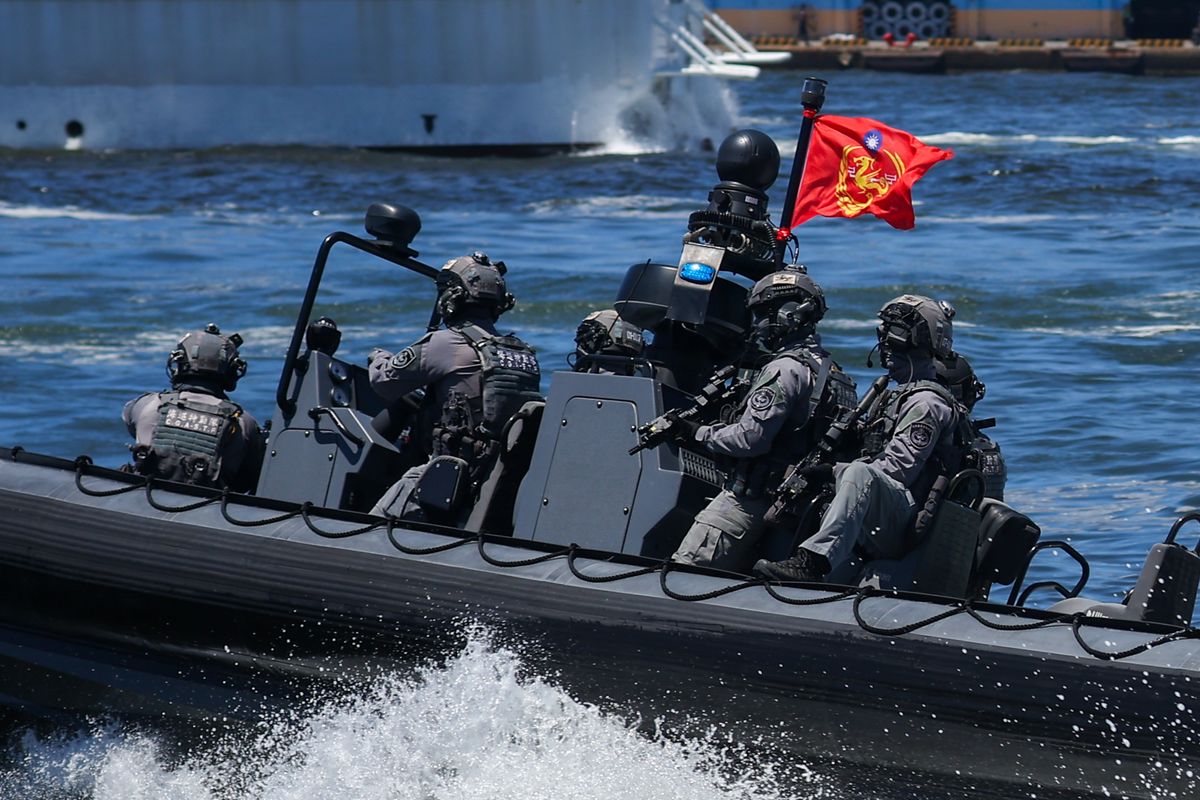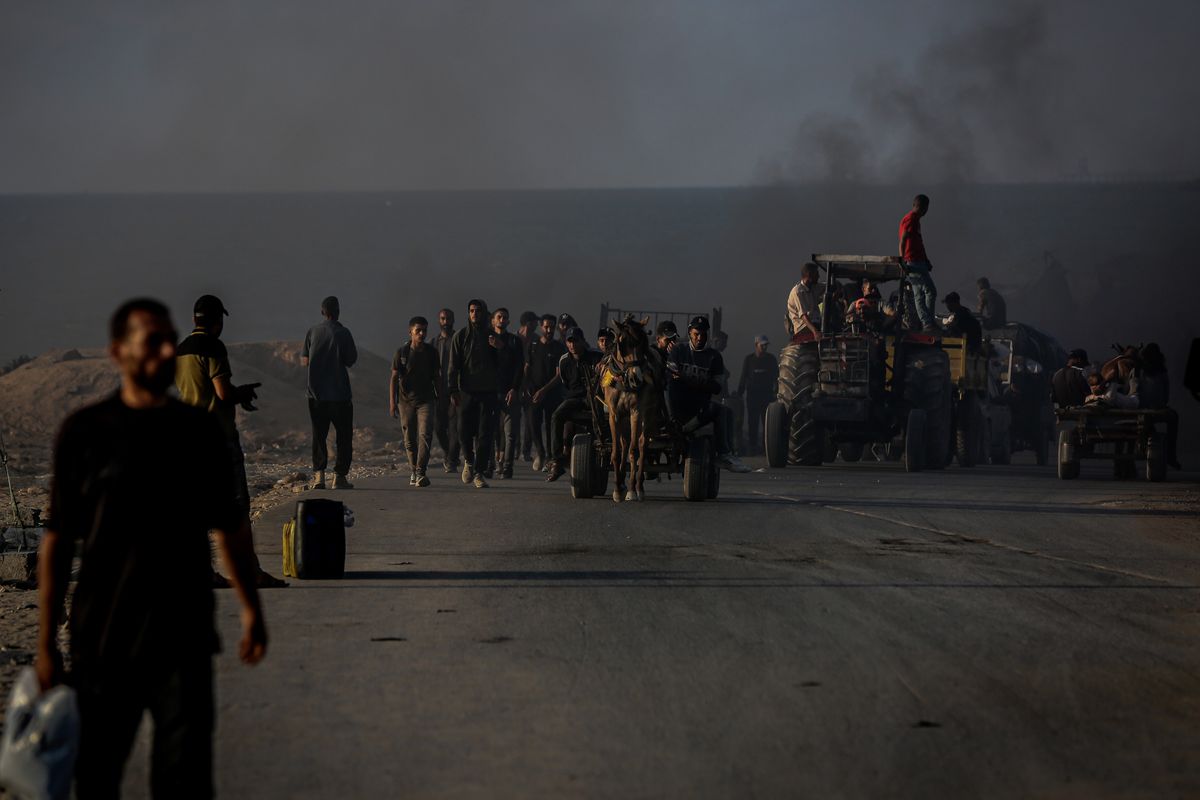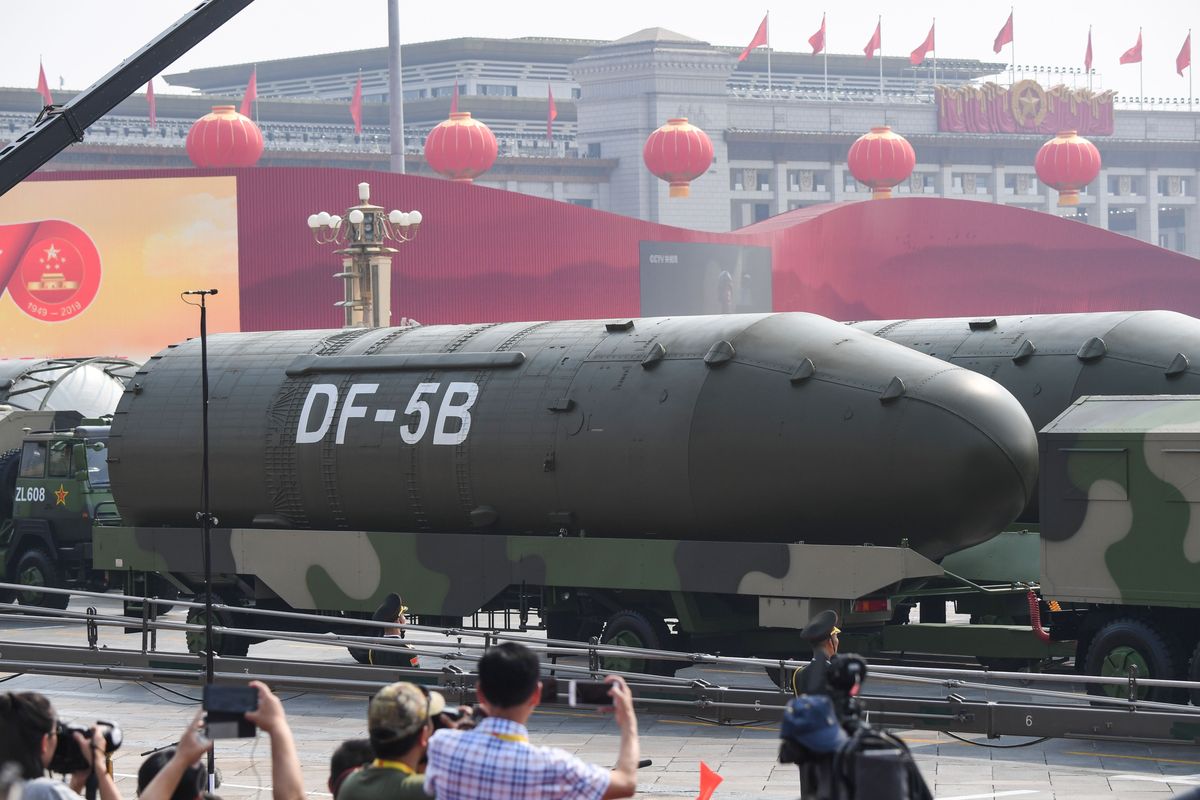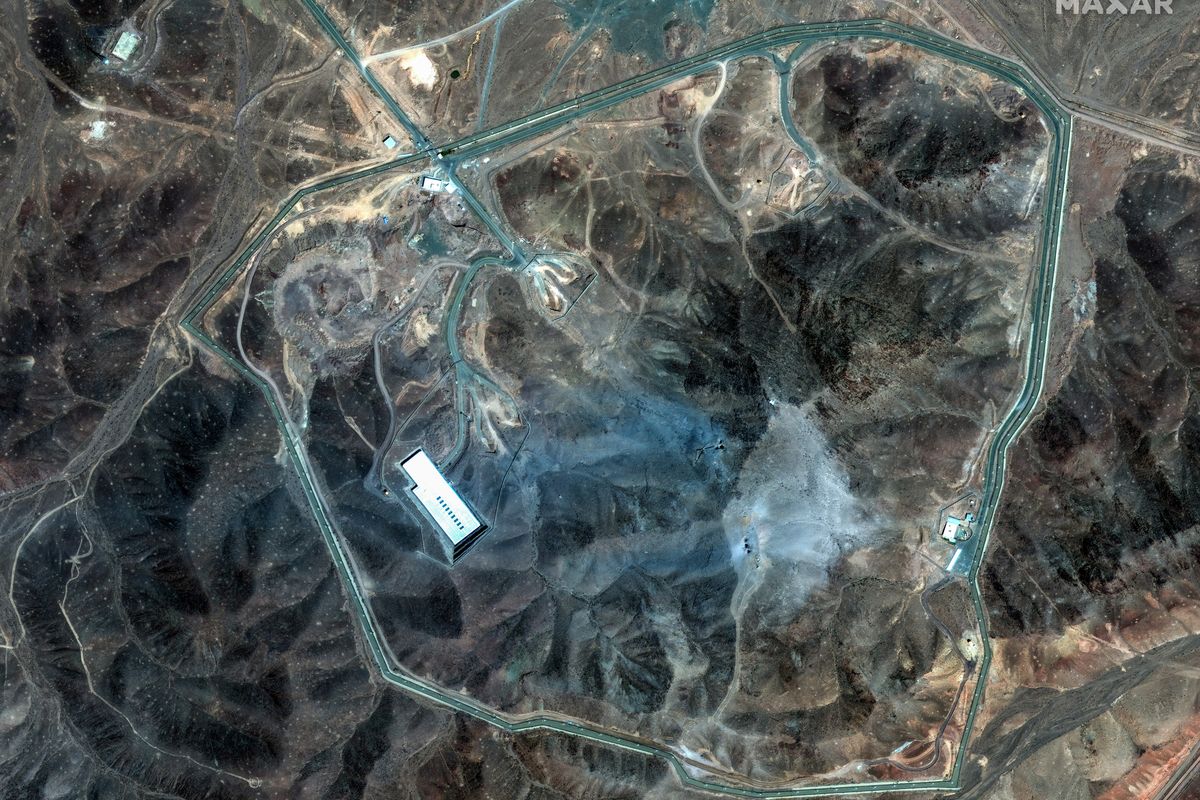OPINION — “I want to ensure that I have a weapon system that will deliver the capabilities that I need to deliver. I also need to make sure that we don’t create a larger gap in having assessments that would drive us to now question one leg of the Triad in regard to how it could perform.”
That was Air Force Gen. Anthony J. Cotton, head of Strategic Command (STRATCOM), last Thursday before the Senate Armed Services Committee answering a question about the proposed new Sentinel nuclear ICBM program from Sen. Elizabeth Warren (D-Mass.).
Warren’s question was generated by the Air Force’s recent disclosure that the Sentinel system was projected to cost $132 billion, 37 percent over its original $96 billion baseline cost, and be delayed for about two years. That cost growth has triggered the 1980s Nunn-McCurdy Act, which requires the Pentagon to review any major defense acquisition program that exceeds its initial cost projection by 15 percent.
The delay has opened up the possibility that the new Sentinel ICBMs will not be available to begin replacing the 50-year-old Minuteman III ICBMs in 2030, as currently scheduled — and that gap, however small in the U.S strategic nuclear deterrent, was Cotton’s major concern at the Senate hearing.
It interested me also because while the Senate panel was looking into problems in a major defense program, House Republicans last Thursday were using their hearing of the House Armed Services Committee politically — questioning Defense Secretary Lloyd Austin’ about his three-day gap in informing the White House about his hospitalization for prostate cancer as a way to embarrass President Biden.
More seriously, the Sentinel discussion came on the same day that Russian President Vladimir Putin renewed his nuclear saber-rattling at the beginning of his annual state-of-the-nation speech, so I thought it worthwhile looking further into what was going on.
It's not just for the President anymore. Cipher Brief Subscriber+Members have access to their own Open Source Daily Brief, keeping you up to date on global events impacting national security. It pays to be a Subscriber+Member.
The Sentinel ICBM program includes developing and producing not only 400 new intercontinental missiles, but also 450 larger and modernized launch facilities (silos); secure and robust command, control, and communications capability; and overall, some 600 facilities, including hardened buildings spread across some 32,000 square miles in five states.
In his prepared statement to the committee, Cotton described the Sentinel Program as “an incredibly complex mega-project” to replace every aspect of the Minuteman III ICBM system, currently the land-based element of the Triad of U.S. strategic nuclear weapon delivery platforms.
Looking back in time, I found there have been previous hints at Sentinel problems. Last November 13, at the Center for a New American Security, Air Force Secretary Frank Kendall said that when the program began in 2014, during the Obama administration, they studied the current Minuteman III system “to see what might need to be replaced, and how hard a job that was going to be.” He added, “That was one of the sources of the unknown unknowns.”
Only last year, Kendall said, had it become apparent that Sentinel is “probably the biggest thing, in some ways, that the Air Force has ever taken on, because it’s a vast real estate development; a civil engineering program; a fairly vast communications, command, and control program as well as, of course, the missile itself.”
Cotton told the Senators, “The command and launch segment is the most complex segment of the Sentinel program. It includes, thousands of miles of modern fiber optic networks, the acquisition of permanent and temporary real estate easements with hundreds of landowners,” and even temporary buildings to support the workforce responsible for converting the new launch facilities.
Who’s Reading this? More than 500K of the most influential national security experts in the world. Need full access to what the Experts are reading?
Last December, a new unit, the Intercontinental Ballistic Missile Modernization Directorate, was established at Barksdale AFB, Louisiana, to oversee and coordinate the retirement of Minuteman III ICBMs and the deployment of the new Sentinel ICBMs. Brig. Gen. Colin Connor leads the Directorate which will be made up of a Sentinel Operating Location team, a Sentinel Requirements Division, and a Sentinel Operations Division.
The Sentinel construction program is projected to run through 2036. The new Sentinel ICBMs will be based at the existing Air Force missile sites at the Warren Air Force Base (AFB) in Wyoming, Minot AFB in North Dakota, and Malmstrom AFB in Montana, but under current plans, it will also involve at least four more Air Force installations.
For example, in January, the Air Force awarded a $120 million contract for a single, new building at Vandenberg Space Force Base, California, to support testing and launch operations for the Sentinel’s missile, designated currently as LGM-35A. The 148,444 square-foot multi-story facility will contain advanced support offices, modern laboratories and storage structures for various work groups and training.
A key element of the current Minuteman III system are the 45 missile alert facilities (MAFs) at the three ICBM missile fields, but only 40 are operational. An MAF consists of an above-ground Launch Control Support Building (LCSB) and a buried, hardened, Launch Control Center (LCC), located 60 feet down and reached by an elevator.
Each LCC functions as primary command and control center for 10 ICBMs and is operated by two Air Force missile combat crew members who work on 24-hour shifts. At any one time, there are 80 such crew members monitoring our current on-alert 400 Minuteman III ICBMs.
According to Air Force Global Strike Command, all 45 MAFs will be demolished, and a new Sentinel launch center (LC) will be constructed within at least 24 areas where MAFs now exist. In addition, a new communication support building (CSB) will be constructed at each current MAF location. Construction of CSBs and conversion of the MAFs to LCs will take three-to-five years at least. In addition, the 450 existing launch silos are to be renovated to fit the larger Sentinel missile.
Another new element for Sentinel requires acquisition of property rights within the current three missile fields to construct 62 up-to 300-foot communication towers. According to the March 2023 Air Force Strike Command’s environmental impact statement (EIS), “Tower sites would be approximately five acres in size and generally be located near existing roads and utilities and avoid sensitive resources.”
In addition, the EIS states that preparation for Sentinel also “includes establishing approximately 3,000 miles of new utility corridors to supplement the existing utility connections to the LFs [silos] and proposed LCs throughout the three missile fields.
The U.S. Air Force on January 24 and 25, held two town hall meetings in Lewistown and Great Falls, Montana to provide the local public with information on the Sentinel program. Brig. Gen. Connor said, “We’re going to pull the [old] missiles out of the silos, figure out what state the silo is in, refurbish them and place the new missile in.” He also said that new fiber optics infrastructure will replace aging telephone lines originally placed in the ground during the 1960s.
Under the Nunn-McCurdy Act now in effect for the Sentinel system, when a major Pentagon acquisition program exceeds the current baseline estimate by at least 25% the Defense Secretary must reassess the program and either terminate it or certify that the program is essential to national security.
If it is so certified, the Defense Department must submit a new selected acquisition report containing the new status of the total program cost, schedule, performance, cost per unit, and cost breach information. The report on the Sentinel program is due to be submitted within 45 days after President Joe Biden submits his budget to Congress, now set for March 9.
Meanwhile, as STRATCOM’s Gen. Cotton told the Senators, “I cannot endure having a gap or a drop in the reliability of a current platform that we currently have in that part of the Triad…It is critical that the Air Force, with the support of Congress, continue investments to ensure sustainment of Minuteman III to manage end-of-life margin until it is fully replaced by a modern ICBM weapon system.”
Not a Subscriber+Member? What else are you missing?
The Sentinel system is only one part of the modernization of the aging U.S. strategic nuclear weapons delivery platforms. The Air Force is also producing 100 new bombers, the B-21 Raider, and the Navy, 12 new Columbia class strategic ballistic missile submarines.
A Government Accountability Office (GAO) report last October, said that altogether these three programs “could cost up to $350 billion over the next 20 years,” and therefore “DoD must keep these modernization efforts on track while also supporting ongoing critical missions.”
There is another issue: the first B-21 bomber; first Columbia class submarine and first Sentinel ICBM are all scheduled to begin replacing older legacy systems around 2030 under current planning.
Cotton said last week of the B-21: “The program is on track to meet operational requirements set by USSTRATCOM, with flight testing under way and the first operational aircraft scheduled for delivery in the late 2020s.”
As for the Navy, Cotton said, the first new Columbia class submarine “must achieve its first strategic deterrent patrol by 2030 to avoid an unacceptable capability gap.” The GAO reported last June that additional workers may need to be reassigned to Columbia in the future to meet an accelerated shipbuilding schedule.
Sentinel faces delays, but as Cotton indicated, additional funds for Minuteman III can keep those ICBMs operational.
If the U.S. can maintain its current 1,550 deployed warheads, with a vast majority of them on alert status, any delay in Sentinel ICBMs should not cause a panic.
Read more expert-driven national security insights, perspective and analysis in The Cipher Brief








